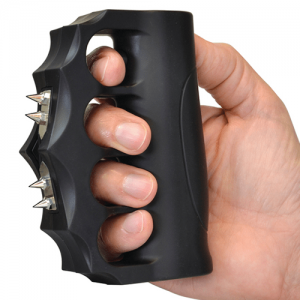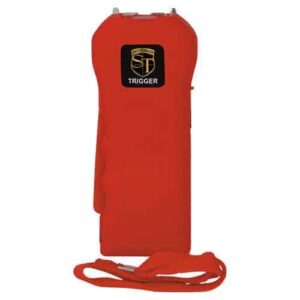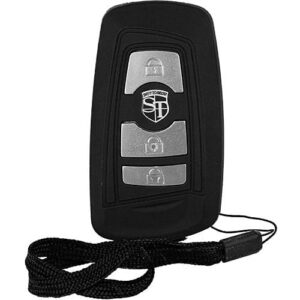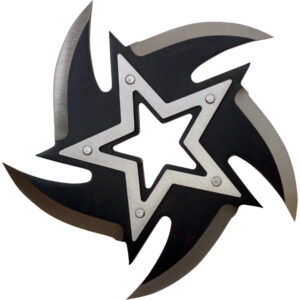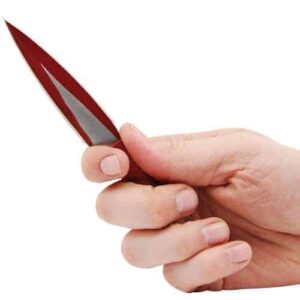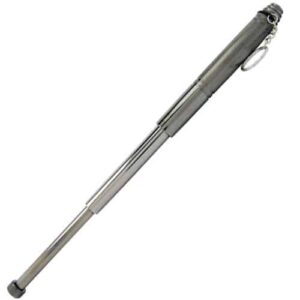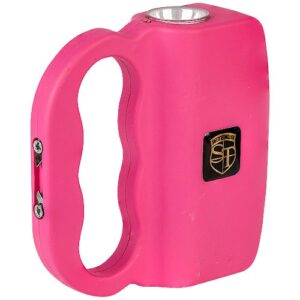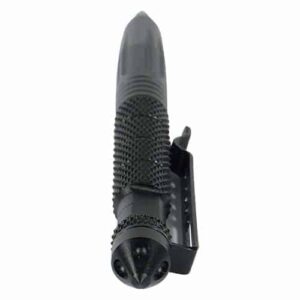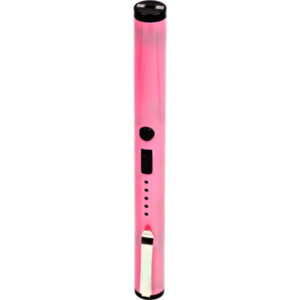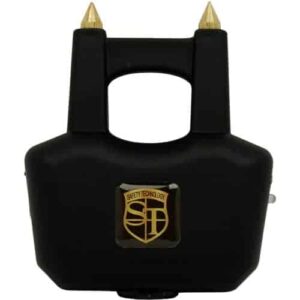Imagine having a compact tool in the palm of your hand that not only provides safety and self-defense but also packs a punch when it comes to working out. Enter the handheld mace, a versatile and powerful fitness accessory that is taking the world by storm. With its simple design and remarkable effectiveness, the handheld mace has become a go-to choice for fitness enthusiasts and individuals looking for a combination of strength training and functional movement. This article explores the incredible benefits and growing popularity of the handheld mace, showcasing its ability to transform your workout routine and enhance your overall well-being. Get ready to unlock the power of the handheld mace and revolutionize your approach to fitness.
Table of Contents
ToggleHistory of the Handheld Mace
Ancient Origins
The handheld mace, also known as a club, has a long and storied history dating back to ancient times. It is believed to have originated in the Neolithic period, around 10,000 BCE, alongside the development of early weaponry. Early maces were simple in design, often consisting of a wooden haft with a heavy stone or metal head. These primitive weapons were primarily used for hunting and self-defense. As civilizations advanced and warfare became more commonplace, the handheld mace began to play a crucial role on the battlefield.
Medieval Development
It was during the medieval period that the handheld mace truly came into its own as a formidable weapon of war. European knights and warriors favored the mace for its ability to penetrate armored opponents. The development of better metallurgy techniques allowed for the creation of maces with more sophisticated heads, featuring flanges or spikes that could deliver devastating blows. The mace became known as the “knight’s arm” and was valued for its ability to bypass the protection of chainmail and plate armor.
Modern Variations
While the handheld mace may have lost its prominence on the battlefield with the advent of gunpowder weapons, it has evolved and adapted in modern times. Today, the mace is often seen in ceremonial and decorative contexts, with intricately designed heads and ornamentation. It has also found a place in competitive sports, such as mace fighting tournaments, where skilled practitioners showcase the weapon’s versatility and historical significance. Additionally, the design principles of the handheld mace have influenced the development of modern weapons, such as batons and police impact weapons.
Design and Construction of the Handheld Mace
Materials Used
The construction of a handheld mace is a careful balance between weight and durability. Historically, maces were commonly made with wooden hafts and metal heads. The metal heads varied in composition, ranging from iron to bronze to steel. In modern times, materials such as reinforced fiberglass or carbon fiber are sometimes used to create lighter mace heads without compromising their structural integrity. The choice of materials depends on the intended use of the mace, whether it is for ceremonial purposes or combat.
Shapes and Sizes
Handheld maces come in various shapes and sizes, each with its own unique characteristics. Some mace heads are shaped like spheres, while others feature flanges or spikes for additional impact and piercing power. The length of the haft can vary as well, with some maces designed to be wielded with one hand, while others require two hands for optimal control and force. The overall size and weight of a handheld mace are often tailored to the user’s preference and intended purpose, whether it be for self-defense, historical reenactments, or display.
Decorative Elements
Beyond their functional design, handheld maces often feature decorative elements that add to their overall aesthetic appeal. These can include intricate engravings, embossed designs, or inlay work on the metal head. Some maces incorporate precious metals, gemstones, or even intricate patterns formed through the process of damascening. These decorative elements not only enhance the visual appeal of the mace but also serve to reflect the status and wealth of the owner or user.
Effectiveness of the Handheld Mace in Combat
Impact and Crushing Power
One of the primary advantages of the handheld mace in combat is its exceptional impact and crushing power. The design of the mace, with its heavy head and concentrated mass, allows for the delivery of devastating blows. The weight and force behind each strike can cause severe trauma to an opponent, capable of inflicting fractures, concussions, and internal injuries. The mace’s ability to generate tremendous impact makes it an effective weapon for disabling armored opponents or breaking through defensive barriers.
Versatility and Maneuverability
Another key aspect of the handheld mace’s effectiveness in combat is its versatility and maneuverability. Unlike longer weapons like swords or polearms, the mace’s compact size and weight make it ideal for close-quarters combat. Its shorter range allows for quick strikes and rapid changes in direction, making it highly adaptable in various fighting scenarios. The mace’s maneuverability allows for effective targeting of vulnerable areas, such as joints or gaps in armor, granting the user a tactical advantage on the battlefield.
Armor-Piercing Capability
One of the handheld mace’s most significant advantages in medieval warfare was its armor-piercing capability. Traditional swords often struggled to penetrate heavy armor, but a well-placed strike from a mace could dent or deform even the thickest plate armor. The concentrated force focused on a small surface area allowed the mace to exert enough pressure to breach an opponent’s defenses, potentially incapacitating or killing them. This ability to bypass armor made the mace a favored weapon of knights and armored warriors during the Middle Ages.
Training and Techniques for Using the Handheld Mace
Grip and Stance
Proper grip and stance are essential for effective use of the handheld mace. The grip should be firm yet not overly muscular, allowing for flexibility and quick adjustments during combat. The stance should provide a stable foundation, with feet shoulder-width apart and knees slightly bent to absorb the shock of strikes and maintain balance. Proper hand positioning on the mace’s haft is crucial, with one hand closer to the head for control and the other further back for a balanced swing.
Striking and Swinging Techniques
Various striking and swinging techniques are employed when wielding a handheld mace. The primary technique involves using the mace’s weight to generate momentum, using the body’s rotation and kinetic energy to deliver powerful strikes. Swinging the mace in wide arcs can target a larger area, while shorter, controlled strikes can focus on specific points. Mastery of timing and precision is key, as mistimed swings can leave the user vulnerable to counterattacks.
Defensive Maneuvers
Besides offense, the handheld mace can also be used defensively. Defensive maneuvers often involve blocking or parrying incoming strikes, utilizing the weight and density of the mace to disrupt an opponent’s attack. The mace’s ability to deliver a heavy impact can be especially effective in disarming an opponent or breaking their weapon. Skilled mace fighters employ a combination of offensive and defensive maneuvers, continually adapting to the flow of battle.
Famous Battles and Warriors Utilizing the Handheld Mace
Battle of Hastings
During the Battle of Hastings in 1066, handheld maces played a pivotal role in the success of the Norman invasion led by William the Conqueror. The Normans, armed with maces, faced off against the Anglo-Saxon army wielding shields and spears. The mace proved instrumental in breaking through the enemy’s shield wall, as its impact and weight crushed through the defense, causing chaos and leaving the Anglo-Saxons vulnerable to follow-up attacks.
Teutonic Knights
The Teutonic Knights, an order of medieval knights who played a significant role in the Baltic Crusades, were known for their use of handheld maces. The mace was favored by the knights for its effectiveness against heavily armored opponents, allowing them to overcome the resistance of the pagan tribes they encountered during their campaigns. The mace’s armor-piercing capability and versatility made it a formidable weapon in the hands of the Teutonic Knights.
Janissaries
The Janissaries, an elite infantry unit formed in the Ottoman Empire, were renowned for their prowess in battle and their use of handheld maces. The Janissaries utilized the mace alongside their traditional weapons as a means of overpowering enemy forces. The mace proved particularly effective during sieges, as it could inflict severe damage to fortifications and break through enemy defenses, ensuring the success of Ottoman campaigns.
Symbolism and Cultural Significance of the Handheld Mace
Royal and Religious Iconography
Throughout history, the handheld mace has been closely associated with symbols of power and authority. In royal and religious iconography, individuals of high rank, such as kings, queens, and bishops, are often depicted holding a mace as a sign of their status and leadership. The mace symbolizes the bearer’s ability to enforce order and is a visual representation of their authority over others.
Mace as a Symbol of Authority
The handheld mace’s association with authority extends beyond religious and royal contexts. In modern times, maces are often used in official ceremonies, such as parliamentary proceedings or graduation ceremonies, where they are carried by high-ranking officials or dignitaries. The mace serves as a symbol of the institution’s power and the authority vested in those who possess it.
Representation in Literature and Art
The handheld mace has also made its way into literature, art, and popular culture as a symbol of strength, masculinity, and medieval warfare. It is often depicted in epic tales of heroic knights and warriors, where the mace is wielded to great effect against formidable adversaries. In artworks and sculptures, the mace is frequently featured as a prominent symbol of martial prowess, resilience, and the indomitable spirit of those who wield it.
Evolution of the Handheld Mace into Modern Contexts
Ceremonial and Decorative Use
In modern contexts, the handheld mace has found a place in ceremonial and decorative settings. It is often employed in events such as parades, processions, and formal occasions, where it serves a symbolic purpose. The mace’s historical significance, as well as its regal associations, make it an ideal prop for adding a touch of grandeur and tradition to these occasions.
Sporting Events
The adaptability and allure of the handheld mace have led to its inclusion in competitive sports and events. Mace fighting tournaments, where participants showcase their skills in simulated historical combat, have gained popularity in recent years. These events preserve the techniques and spirit of historical warfare while providing an entertainment platform for enthusiasts and spectators alike.
Influence on Weapon Design
The design principles and functional attributes of the handheld mace have influenced the development of modern weapon designs. The mace’s focus on delivering impact through concentrated force has been applied to modern impact weapons used by law enforcement and security personnel. Batons and other impact weapons often feature a weighted head, akin to the mace, maximizing striking power while maintaining ease of use and portability.
Contemporary Manufacturers and Suppliers of Handheld Maces
Quality and Customization Options
A variety of manufacturers and suppliers cater to the demand for handheld maces in the modern market. These establishments offer a range of customization options, allowing customers to select materials, designs, finishes, and even engravings to create unique and personalized maces. The quality of the maces varies between manufacturers, with some prioritizing historical accuracy and craftsmanship, while others focus on producing maces for specific purposes such as combat reenactments or display.
Availability and Price Range
Handheld maces are available for purchase through a myriad of sources, including specialized weapon shops, historical reenactment societies, and online retailers. The price range for handheld maces can vary greatly, depending on factors such as materials used, craftsmanship, and level of customization. Entry-level maces designed for display purposes can be relatively affordable, while high-end, expertly crafted maces can command a significant price due to their historical accuracy and artisanal craftsmanship.
Reputation and Customer Reviews
When considering purchasing a handheld mace, it is essential to research the reputation and customer reviews of the manufacturers and suppliers. Reviews can provide valuable insights into the quality, durability, and customer service provided by a particular establishment. Consulting with fellow mace enthusiasts or seeking recommendations from reputable historical societies can also help guide the decision-making process and ensure a satisfying purchase.
Legal and Safety Considerations Surrounding the Handheld Mace
Restricted or Prohibited in Certain Jurisdictions
It is crucial to be aware of legal restrictions and regulations concerning the possession and use of handheld maces in different jurisdictions. In some regions, handheld maces may be classified as weapons and subject to specific laws, which may prohibit or restrict their ownership, carry, or use. It is recommended to familiarize oneself with local laws and obtain any required permits or licenses before acquiring a handheld mace to avoid legal complications.
Training and Certification Requirements
For those interested in using handheld maces for combat or historical reenactments, obtaining proper training and certification is highly recommended. Many historical societies or martial arts organizations offer training programs focused on mace fighting techniques and safety protocols. These programs ensure that individuals are equipped with the necessary skills and knowledge to handle handheld maces safely and effectively.
Safety Guidelines and Protective Gear
When engaging in any activity involving handheld maces, adherence to safety guidelines and the use of appropriate protective gear is essential. Helmets, padded gloves, and body armor can help mitigate the risk of injury during combat or reenactments. It is crucial to follow recommended safety protocols, such as maintaining proper distances from other participants and ensuring a clear and controlled environment for mace-related activities.
Handheld Mace Collecting and Care
Tips for Collectors
Handheld mace collectors should take certain considerations into account to ensure the preservation and longevity of their prized pieces. Collectors should prioritize proper storage and display conditions, such as minimizing exposure to sunlight, controlling humidity levels, and protecting maces from dust and moisture. Regular inspections and cleaning using appropriate methods and materials can help prevent corrosion or damage.
Maintenance and Preservation Techniques
To maintain the functionality and appearance of a handheld mace, regular maintenance is necessary. This includes caring for the haft by applying protective coatings or oils to prevent splintering or decay. The metal components require periodic cleaning and polishing to prevent rust or tarnish. However, it is important to strike a balance between preservation and altering the original patina or historical character of the mace.
Display and Storage Options
Displaying and storing handheld maces requires careful consideration to ensure their longevity and aesthetic appeal. Options for displaying maces range from custom-made stands to wall-mounted brackets or glass display cases. It is important to choose display options that protect the mace from accidental damage while allowing for easy viewing and appreciation of its design and craftsmanship. When not on display, maces should be stored in a secure and climate-controlled environment to minimize the risk of degradation or deterioration.



